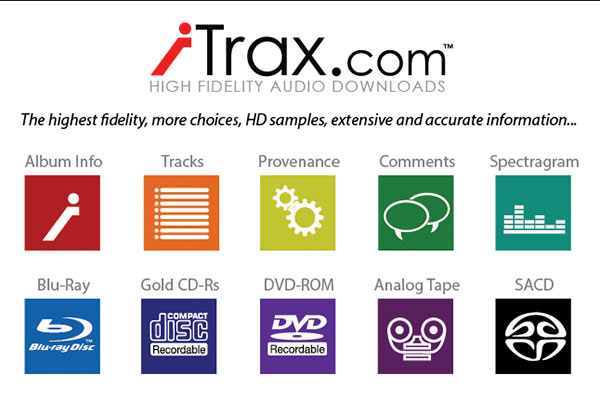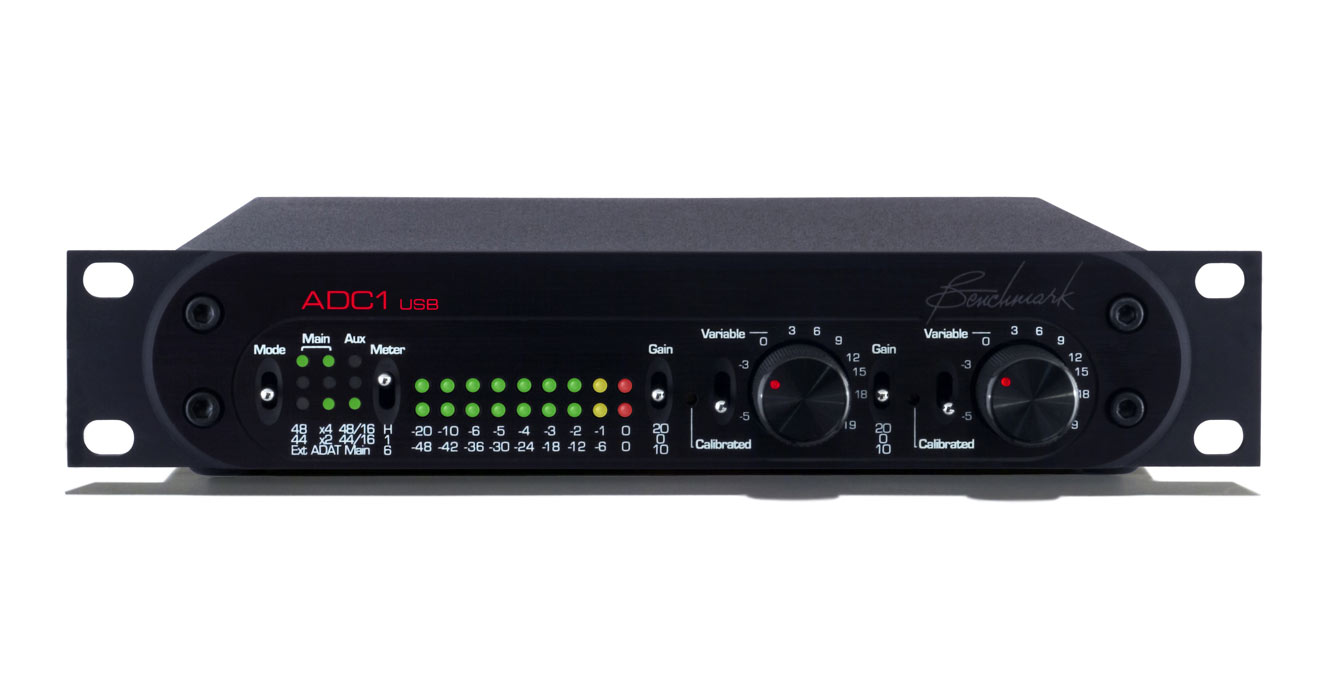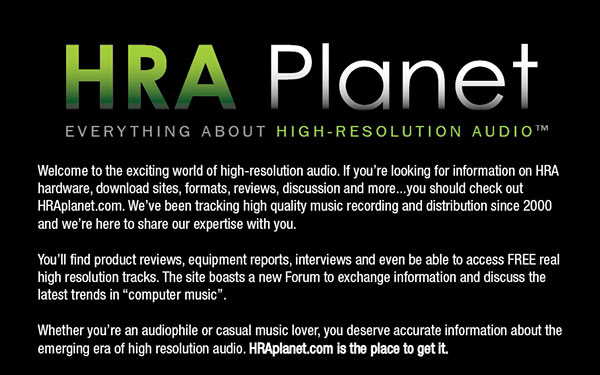New Year Resolutions
Welcome to 2014! It’s a time of renewal, fresh starts and new opportunities. And of course, it’s time for New Year resolutions. Here are a couple that I’ve made:
1. I’ve resolved to expand and improve the availability of the iTrax.com website to inform and deliver high quality audio content regardless of whether it actually qualifies as “high-resolution audio” or not. That might sound like a retreat from the high standards that iTrax adopted 7 years ago when I launched the world’s first high-resolution digital music download site…but I see it as an opportunity to provide better quality and more choices to an increasing customer base. After all, the world’s does need great digital versions of standard definition analog tape masters too.
Figure 1 – The postcard that I will be handing out at the CES 2014 show in Vegas announcing the new iTrax.com
As I’ve looked around at the competition, I’m disappointed that customers are purchasing tracks that are advertised as “high-resolution or higher fidelity”, when in fact it’s hit or miss whether the fidelity will be any better than a standard CD. After all, why would anyone spend upwards of $30 on a retread of an older album that sounds identical to the version you already have on your shelf?
As I’ve contemplated how to improve and expand iTrax, it became clear that iTrax could join the club and become the kind of site that offers the same content files from the major labels and others OR double down on quality and focus on better quality, accurate information and format choices. I’d rather not be just one more site selling overpriced, upconverted classic records. Maintaining the current path in downloadable high-resolution has already resulted in customer blowback and dissatisfaction. The business will ultimately disappear when customers burn out on broken promises of “ultimate quality downloads” just like they did when CDs were advertised as “perfect sound forever”.
Beginning in the first quarter of this year, iTrax will have a new an improved user interface. The site will allow users to read about the provenance of each album or track, view spectragrams, learn about the technical processes used to create the files, make available high-resolution samples for pre-purchase review and even provide physical media such as Blu-rays, CD-Rs, DVD-ROM, SACDs and even analog tape copies.
Figure 2 – The Benchmark ADC1 is a professional, state-of-the-art 192 kHz/24-bit analog to digital converter [click to enlarge].
We’ll start with a small number of cherished albums and do the necessary homework to acquire the very “best master” and then I will personally transfer the analog source to a digital master…using the very best analog to digital converter I know (the Benchmark ADC1 USB) running at 192 kHz/24-bits. iTrax will not offer just another copy of the wrong EQ’d master, transferred with overloads and inconsistently mastered.
The new catalog of older masters will emerge slowly but the fidelity will be second to none…and you’ll have choices with regards to formats, mixes, mastering and presentation.
Figure 3 – The new HRAplanet.com site announcement postcard.
2. I resolve to expand the amount of information available on the emerging world of high-resolution audio. There will be a new website/forum coming soon called HRAplanet.com (High-Resolution Audio Planet). The site will have product reviews, interviews, news, equipment reports, recommendations and a robust forum for engaging and informed discussions among music lovers. Of course, this site will continue and some of the posts will appear on the new site as threads. I invite all readers of RealHD-Audio.com to visit HRAplanet and become part of the community. 2014 is going to be the year that high-resolution audio goes mainstream.





Mark,
I could not agree more! I’ve been saying for a while that high-quality versions of classic albums should be looked at as an entrypoint – dare I say “a gateway drug”? – to “the hard stuff”: recordings made in high-def in the first place.
Make the quality of the transfers – and easily-understood declarations of the provenance and quality of the masters – and the transfer process – a point of competition and you’ll force everyone to raise their game.
When CDs first came out, it was common to see a code like AAD or DDD on them to indicate what stages of the process were analog or digital, and consumers looked for disks that said DDD – until the backlash among some traditionalists made the use of analog technology the fashion.
While your spectrograms are revealing, they’re mystifying to many – including me at first, until I realized that the frquency and time axes were rotated 90 degrees from what I expected!
Better, in this number-saturated environment, to give numbers indicating the musical frequency range actually contained in a particular recording, and maybe even what the “center of gravity” of the frequencies in a track is – which would say, in effect, “this is a bass-heavy track” or “lots of high frequencies in this one.” People might well use such an analysis in choosing music to suit their mood – or personality.
I’d like to know for sure that a hi-def transfer of an album made after digital recording became common was indeed made from a digital master and hadn’t gone through analog tape, with the loss of dynamic range and frequency response that would entail.
Since many producers made (make?) their final stereo mix to analog tape, there are big questions: Were the digital recordings kept? and Would they let you use them to do new digital mixes? That’s plural, of course, since part of what you should offer would of course be the range of mixes you’ve been offering.
Big undertaking, but it would be ground-breaking.
PS One of the most popular DVD-A disks from the majors is of Steely Dan’s Gaucho (Aja was the last disk they recorded using analog technology) – and from what I’ve read of how Fagen and company go about making a DVD-A release is to do the stereo mix first and then do the surround mix afterwards (and theirs are always stage perspective).
This can’t happen soon enough. I just bought “Chicago II” (96/24 stereo) and am very disappointed. No provenance on the website so I should have known better. I bought “Tea for the Tillerman” recently too and it is far more pleasing. Can’t wait to download some classic albums from your site.
May I suggest Dan Fogelberg’s “High Country Snows” as a title you might consider acquiring for iTrax? This was one of my first CDs because, as I recall, it was promoted as a DDD disc. If that’s true, wouldn’t the original recording be digital and perhaps ideal for what you are wanting to do at iTrax?
I love Dan Fogelberg’s music. I’ll see what I can do with the label.http://www.realhd-audio.com/wp-admin/edit-comments.php#comments-form